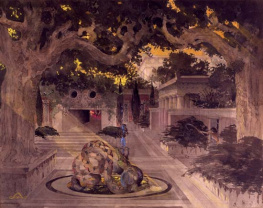Paul Kidder - Minoru Yamasaki and the Fragility of Architecture
Here you can read online Paul Kidder - Minoru Yamasaki and the Fragility of Architecture full text of the book (entire story) in english for free. Download pdf and epub, get meaning, cover and reviews about this ebook. City: London, year: 2021, publisher: Routledge, genre: Art / Science. Description of the work, (preface) as well as reviews are available. Best literature library LitArk.com created for fans of good reading and offers a wide selection of genres:
Romance novel
Science fiction
Adventure
Detective
Science
History
Home and family
Prose
Art
Politics
Computer
Non-fiction
Religion
Business
Children
Humor
Choose a favorite category and find really read worthwhile books. Enjoy immersion in the world of imagination, feel the emotions of the characters or learn something new for yourself, make an fascinating discovery.
- Book:Minoru Yamasaki and the Fragility of Architecture
- Author:
- Publisher:Routledge
- Genre:
- Year:2021
- City:London
- Rating:3 / 5
- Favourites:Add to favourites
- Your mark:
Minoru Yamasaki and the Fragility of Architecture: summary, description and annotation
We offer to read an annotation, description, summary or preface (depends on what the author of the book "Minoru Yamasaki and the Fragility of Architecture" wrote himself). If you haven't found the necessary information about the book — write in the comments, we will try to find it.
Few figures in the American arts have stories richer in irony than does architect Minoru Yamasaki. While his twin towers of New Yorks World Trade Center are internationally iconic, few who know the icon recognize its architects name or know much about his portfolio of more than 200 buildings. One is tempted to call him Americas most famous forgotten architect. He was classed in the top tier of his profession in the 1950s and 60s, as he carried modernism in novel directions, yet today he is best known not for buildings that stand but for two projects that were destroyed under tragic circumstances: the twin towers and the Pruitt-Igoe housing project in St. Louis. This book undertakes a reinterpretation of Yamasakis significance that combines architectural history with the study of his intersection with defining moments of American history and culture. The story of the loss and vulnerability of Yamasakis legacy illustrates the fragility of all architecture in the face of natural and historical forces, yet in Yamasakis view, fragility is also a positive quality in architecture: the source of its refinement, beauty, and humanity. We learn something essential about architecture when we explore this tension of strength and fragility.
In the course of interpreting Yamasakis architecture through the wide lens of the book we see the mid-century role of Detroit as an industrial power and architectural mecca; we follow a debate over public housing that entailed the creation and eventual destruction of many thousands of units; we examine competing attempts to embody democratic ideals in architecture and to represent those ideals in foreign lands; we ponder the consequences of anti-Japanese prejudice and the masculism of the architectural profession; we see Yamasakis style criticized for its arid minimalism yet equally for its delicacy and charm; we observe Yamasaki making a great name for himself in the Arab world but his twin towers ultimately destroyed by Islamic militants. As this curious tale of ironies unfolds, it invites reflection on the core of modern architectures search for meaning and on the creative possibilities its legacy continues to offer.
Beautifully illustrated with over 100 color illustrations of Yamasakis buildings, this book will be of interest to students, academics and professionals in a range of disciplines, including architectural history, architectural theory, architectural preservation, and urban design and planning.
Paul Kidder: author's other books
Who wrote Minoru Yamasaki and the Fragility of Architecture? Find out the surname, the name of the author of the book and a list of all author's works by series.










